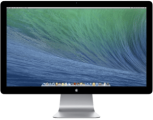Data Storage:
- Students will be able to identify data storage vocabulary.
- Language Objective: To complete a data storage worksheet.
Web Design Articles:
- Students will be able to identify web design concepts.
- Language Objective: Students will read and complete a worksheet/Summary.
Web Design
- Students will be able to preview and identify good and bad website designs.
- Language Objective: To write out a list of pro’s and cons in a template on Google Classroom
After completing Chapter 1, students will be able to identify, hypertext, hyperlinks, hypermedia, HTML, web browsers, transfer protocols, and the HTML structure.
- Language Objective: Students will complete a quiz/worksheet on chapter 1
After completing Chapter 2, students will be able to identify HTML tag syntax, document section tags, text formatting tags, layout tags, and logical tags.
- Language Objective: Students will complete the exercises in chapter 2 and preview their exercises in a browser.
After completing Chapter 3, students will be able to identify general tag attributes for the <HR> and <Font> tags and Character Reference tags.
- Language Objective: Students will complete the exercises in chapter 3 and preview their exercises in a browser.
After completing Chapter 4, students will be able to identify inline image formats, image tags with attributes, and background images and color tags.
- Language Objective: Students will complete the exercises in chapter 4 and preview their exercises in a browser.
CHAPTER 3-4 REVIEW
- Students will be able to create a website based on their knowledge of html tags taught in chapters 3 and 4.
- Language Objective: Students will complete the chapter 2-4 MHS Assignment as a webpage.
After completing Chapter 5, students will be able to identify hyperlink action results, hyperlink formatting, and hyperlink tags with attributes.
- Language Objective: Students will complete the exercises in chapter 5 and preview their exercises in a browser.
After completing Chapter 6, students will be able to identify <BR> and <P> tag attributes, new browser tag, <meta> tag, and ordered list attribute tag.
- Language Objective: Students will complete the exercises in chapter 6 and preview their exercises in a browser.
After completing Chapter 11 & 12 (Tables), students will be able to identify the table tags, as well as, table tags with attributes.
- Language Objective: Students will complete the exercises in chapter 11 and 12 and preview their exercises in a browser.
Web Site Development Assignment
- Students will be able to understand the web site development process, by way of completing the Web Site Development Assignment.
- Language Objective: Students will be able to create a web site utilizing the Web Site Development Assignment.
CSS
- Students will be able to identify CSS code and structure.
- Language Objective: Students will be able to practice incorporating CSS into a sample/tutorial file.
Sound:
- Students will be introduced web sound formats.
- Language Objective: Students will be able to find and incorporate sound clips into a webpage.
Adobe Photoshop
- Students will be able to identify and utilize the basic operations of Adobe PhotoShop.
- Language Objective: Students will create and manipulate images in Adobe Photoshop
Dreamweaver
- Students will be introduced to Dream weaver-web page editor.
- Language Objective: Students will explore and practice the functions of Dreamweaver.
Adobe Imageready
- Students will be introduced to Adobe Imageready for the purpose of creating web based animation.
- Language Objective: Students will be able to create animation from scratch using AdobeImageready.
Mobile Development
- Students will be introduced to Mobile Development. Students will be able to identify User Created Content Material, Design, and Proof of Concept.
- Language Objective: Students will create a website using Dreamweaver, to display their knowledge ofuser created material, design, and proof of concept for an app.
Unplugged Activities
- Students will —
- Gain experience determining the outcome (true or false) of conditionals
- Evaluate logical statements to determine which branch of a program to follow
App Inventor:
- Learn the mechanics of using App Inventor to build apps.
- Learn how to design an app’s user interface with the App Inventor Designer and its behavior with the Blocks Editor.
- Understand that an app’s behavior consists of event handlers– blocks that specify how an app responds to each event.
- Understand that an app can make decisions using a conditional (if) block.
- Understand that a component has a set of properties and that a property is a memory cell that can be changed to modify how a component looks and behaves.
- Learn how to test an app, how to deploy it to a device, and how to publish it on a portfolio and the App Inventor Gallery.
- Language Objective: Students will create apps using app inventor.
